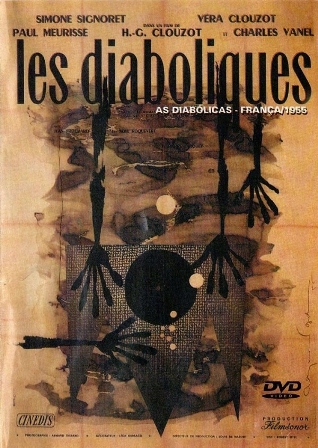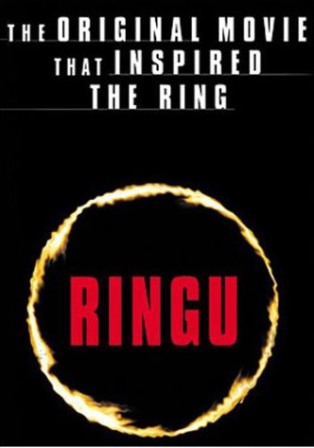CHICAGO – If you’ve never seen the farcical ensemble theater chestnut “Noises Off,” you will see no better version than on the Steppenwolf Theatre stage, now at their northside Chicago venue through November 3rd. For tickets and details for this riotous theater experience, click NOISES OFF.
Film Feature: The 10 Scariest Scenes in Film History
7. “Carrie”

Carrie
Photo credit: UA
Just one year after Spielberg’s crowd-pleaser, De Palma released this jet black satire about a troubled young woman’s high school hell. Yes, the film is hokey and dated at times, but it still delivers the goods, leading up to a final scene that is perhaps the greatest “jump-out-of-your-seat” moment in cinema history. The film is essentially one long build-up to that moment. As Carrie (Sissy Spacek), suffers humiliations both at home and in the classroom, the audience shares in her agony. Yet viewers are also able to identify with one of Carrie’s peers, Sue (Amy Irving), who develops compassion for the girl she once taunted and makes a valiant effort to right her wrongs. With the help of her boyfriend, Tommy (William Katt), Sue coordinates a dream night for Carrie at the prom, which derails in spectacular passion. Carrie’s telekinetic powers fatally combine with her irrational anger, as she turns a glittery gymnasium into a raging inferno. Though this is the film’s primary set-piece, it is more disturbing than “lose-your-sleep” scary. Yet it proves to only be a prelude for the last sequence, in which Sue makes one final attempt at reconciliation. Mario Tosi’s hypnotic music poignantly conveys Sue’s guilt, which has dragged her down into the depths of the despair. What happens next is stunningly scary, even for viewers who can see it coming (De Palms admits he borrowed the moment from “Deliverance,” but he ended up improving it tenfold).
6. “Diabolique”

Diabolique
Photo credit: Cinedis
Hitchcock fans take note: “Diabolique” is the greatest suspense film never made by the Master of Suspense, despite the fact that Hitch attempted to secure the rights to its source material. Unfortunately for him, the great French filmmaker Clouzot had already acquired the rights to Pierre Boileau and Thomas Narcejac’s book, “Celle qui n’était plus,” Though he only made a fraction as many films as Hitch, Clouzot is justifiably renowned as the “French Hitchcock,” a reputation forever cemented by this excruciatingly tense masterwork. The plot certainly would’ve made Hitch salivate: Christina (Véra Clouzot, the director’s wife) decides to off her detestable and dangerous husband, Michel (Paul Meurisse), with the help of his mistress, Nicole (Simone Signoret). After drowning him in a bathtub, the two women dispose of the body while avoiding to stoke the suspicions of onlookers. Yet after the body disappears from what was meant to be its final resting place, Christina begins to fear that her husband is still among the living, or perhaps is tormenting her from the beyond the grave. Like “Carrie,” “Diabolique” builds its suspense gradually until it practically becomes unbearable (believe me, it hurts so good). The film’s phenomenally chilling climax takes place in absolute silence, as Christina becomes overwhelmed with shock. Like the rest of the picture, this moment is as fresh and deliriously frightening as the day it was made.
5. “Psycho”

Psycho
Photo credit: Universal
“Psycho” was originally conceived as Hitchcock’s attempt to equal the pure horror of “Diabolique.” To say he succeeded would be a massive understatement. “Psycho” is not only the most famous horror film of all time, but one of the most subversive. It’s also one of the first films to consciously inspire viewers to shout at characters on the screen, offering them some much needed advice, such as, “Don’t go in that fruit cellar!” In his typically witty theatrical trailer, Hitch took moviegoers on a tour of the set, highlighting particular locations where bloody events would take place (including the notorious tub). Thus, when each location would appear in the film, audiences who saw the trailer would already be anticipating the scare. And after the brutally jarring shower scene proved that literally no one was safe (not even the alleged main character), viewers instantly became frightened for anyone daring to approach the Bates Motel, home of the homicidal old recluse, Mother Bates. Films such as Ridley Scott’s “Alien” owe a debt to Robert Bloch’s cleverly structured script, which succeeds in effortlessly manipulating audience expectations. No moment can truly top the infamous shower scene, which reportedly inspired its victim, Janet Leigh, to prefer baths for the rest of her life. Yet for me, the scariest moment is the one in which Detective Arbogast (Martin Balsam) makes the ill-advised decision to investigate the Bates residence. It’s preceded by a brilliantly acted and written scene between Arbogast and Norman Bates (Anthony Perkins), and set the gold standard for films intending to milk the exquisite horror of morbid anticipation.
4. “Ringu”

Ringu
Photo credit: Sony
There’s an entire subgenre of Asian horror flicks that could be accurately encapsulated by this summary: “Disgruntled dead lady in a white robe goes on a killing rampage, fatally shocking people by flashing her angry grimace, residing beneath layers of silky black hair.” The premise sounds ludicrous on paper, yet it has provided the fodder for endless thrillers, many of which have been followed by wildly inferior American remakes. The best and most effective example of these pictures is Nakata’s original “Ringu,” which was remade with partial success by Gore Verbinski in 2002. While the Americanized “Ring” was sporadically chilling at best, “Ringu” is riveting the entire way through, partly because of its quietly brooding tone. A more overblown approach would’ve instantly warranted the material laughable. The plot concerns a mysterious videotape containing ominous clues to the unsolved murder of a young girl. Any viewer unable to piece together the mystery winds up dead in seven days. But how exactly do these victims perish? The answer is eventually revealed in a sequence that is as close to heart-stopping as anything captured on film. Nakata’s restraint (which was entirely lacking in “The Ring 2”) is key to this sequence, which views the supernatural events with matter-of-fact stillness. Verbinski fumbled the ball in his version by creating a digital apparition. The horror was diminished because of its obvious artificiality. In Nakata’s version, we’re treated to a real actress with real hair crawling out of a real television set and glaring at her victim, with an eyeball that has the power to inspire nightmares for far more than seven days.


